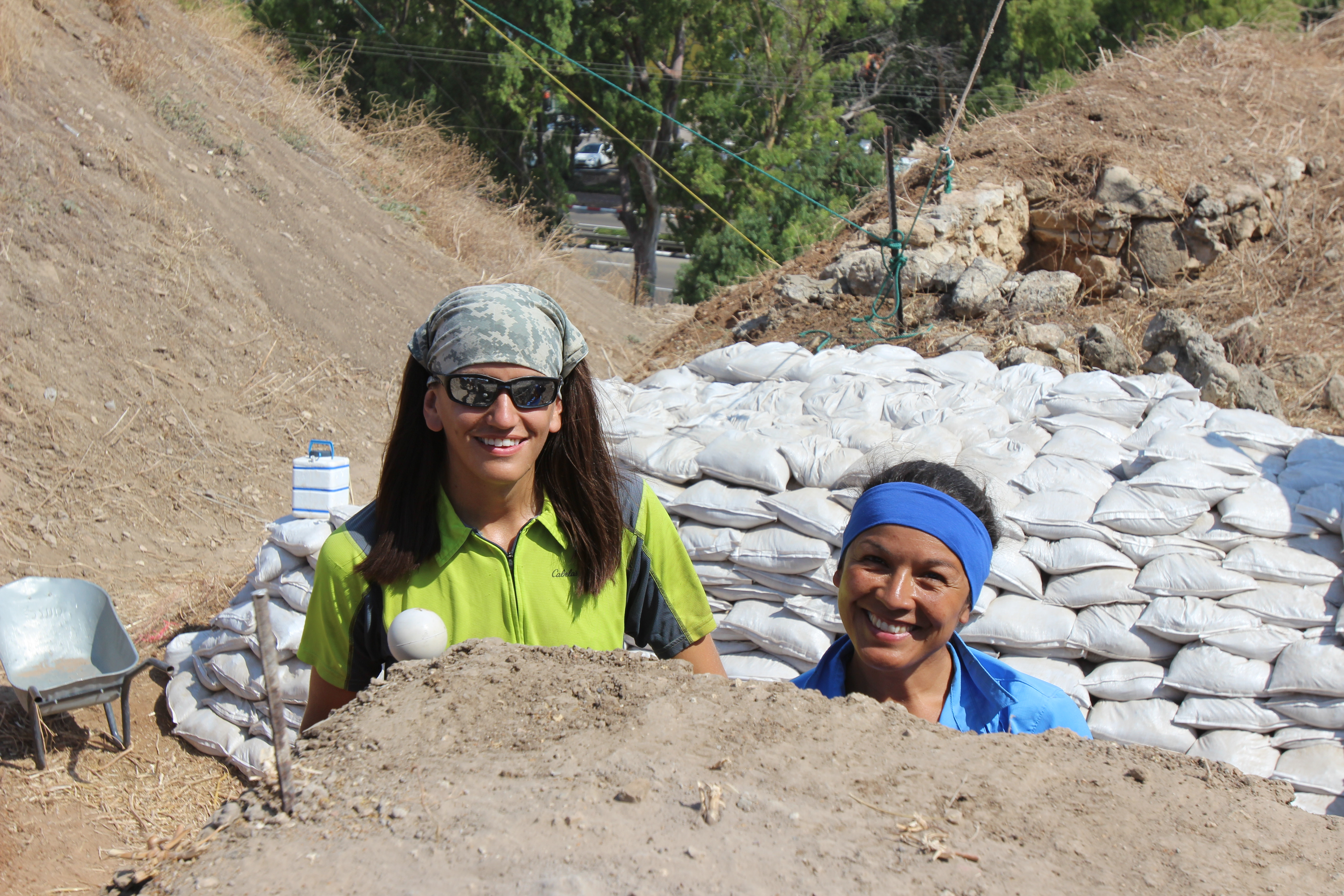Survey
Wheel barrel…check. Five big picks…check. Five turiyas…check. Fifteen smuggled buckets…check. It’s time for SURVEY!! At first glance, an archaeological survey can look like nothing more than numerous amounts of mysterious holes being dug up all day by individuals seeking grueling labor-intensive undertakings and the ability to swing a big pick. While there is a thrilling sensation in swinging a forged steel tool overhead and hurling it toward the ground, field survey is so much more than just big picks, holes, and brute force. Survey is a type of field research that archaeologists use to collect information about the location and organization of past human cultures across a large area.
First, we start by digging a small pit that is 40 centimeters by 40 centimeters by 40 centimeters on a grid every 5 meters across the site. In the first top 20 centimeters, we collect materials such as pottery sherds, shells, bones, glass beads and tabun ovens (if you’re Bryn), loom weights and cannons (if you’re Sugerman), rocks and walls (if you’re Iraise), pendants and Egyptian beads (if you’re Bret), and more pottery sherds (if you’re John Michael). A separate collection is made for the bottom 20 centimeters. These pits help archaeologists to get a general idea of which parts of the sites were occupied at specific periods. Through examining the pottery and unique finds in the pits, we can determine which material was used in the Bronze Age, Iron Age, or Persian Period.
Tel Akko started this process nine years ago, and every year a slice of the site is surveyed. In more recent years, the survey team has been able to understand what happened at the site after it was abandoned. The top 40 centimeters reveal how the site was used in the last 2,000 years after people moved away from the Tel. We get a sense of what people did on the Tel after they moved toward the coast and there was not a town directly on it. For example, there are traces of farmlands, vineyards, fruit orchards, and watchtowers, which are all discovered through hundreds of small holes in the ground.
After digging over 200 pits as a team, I would also add that not only does survey discover patterns in the distribution of materials in various cultural regions and historical periods, but when you survey you become part of a family. Every day we worked alongside each other, not just digging holes and discovering the past, but also sharing our life stories, joys, hardships, and plans for the future. I want to thank Michael Sugarman, Bret, and John Michael for inviting me into this incredible welcoming family. We dug, we laughed, we surveyed!
As stated by Jamie Quartermaine (the survey master), survey is not about building big muscles, but a revolutionary field that gives the world greater access to the discoveries of archaeology… and I would add, a time for long-lasting friendships.

1 Comment